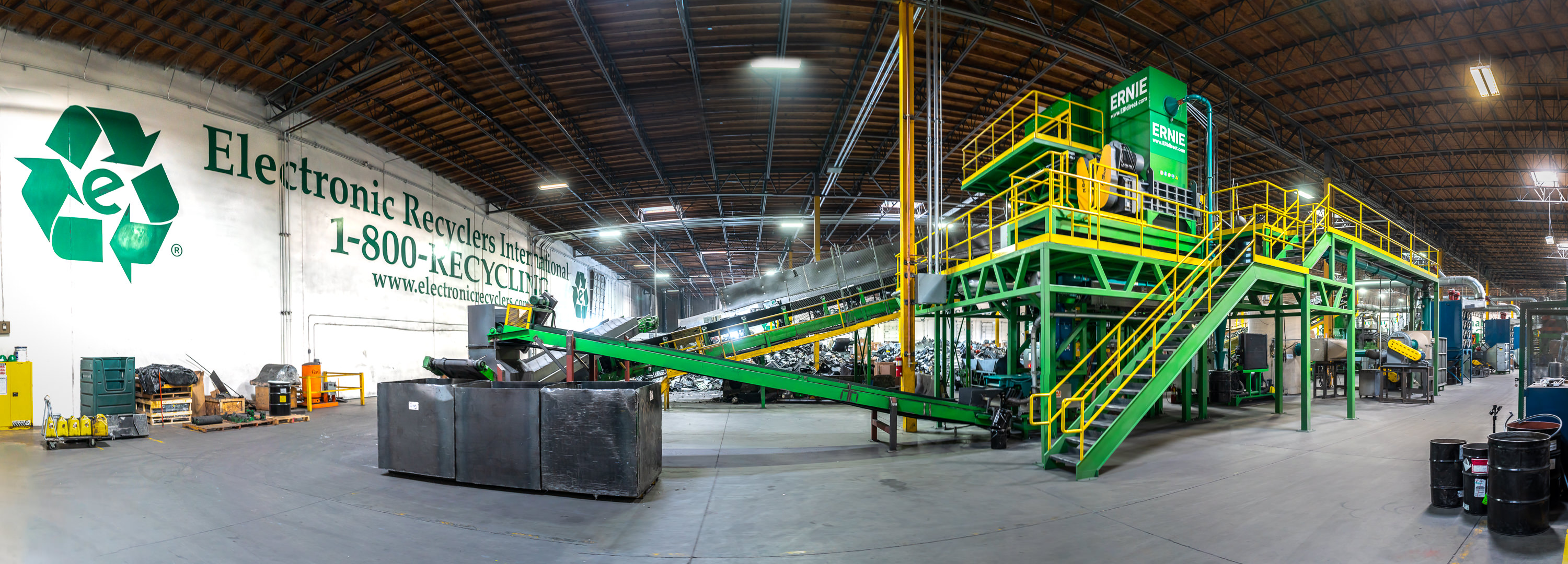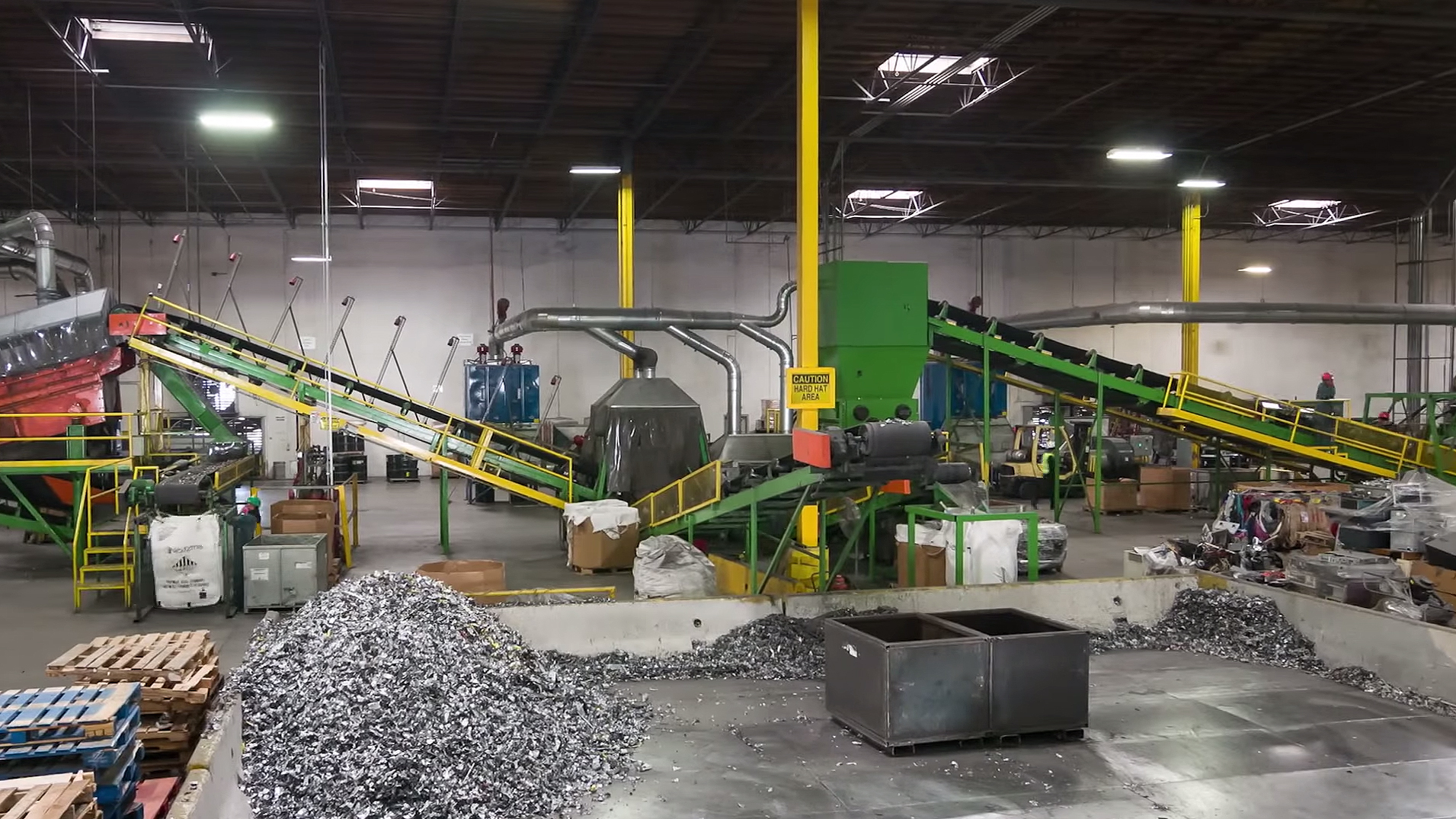The Circular Economy is Critical for any Responsible ITAD or Reverse Logistics Process
By Kevin Dillon, ERI
In 2021, it was calculated that our world was actively generating 53.6 million tons of electronic waste and that Americans were responsible for more than 29.3 pounds of e-waste per person each year. With a high turnover of electronics due to constant innovation, this may not be so surprising. What may seem more surprising is that according to the United Nations, only 17.4% of global e-waste is responsibly recycled. The rest of it gets shipped out of sight to landfills or sent offshore, often to developing nations, where mercury, arsenic and lithium are left to seep into the ground and data-bearing devices with sensitive information can be found and exploited.
Cardboard and plastic consumer recycling has become so mainstream that ignoring recycling bins seems unthinkable. However, our electronic waste, consisting of precious metals, dangerous chemicals and sensitive data, continues to find its way to the trash each time new technology enhancements are introduced. In fact, e-waste remains the fastest-growing waste stream in the world today by an exponential margin over the second-fastest (plastic).
For businesses focused on effective ESG and sustainability protocols in their ITAD processes, it is essential to embrace the circular economy for their electronics.
Understanding the Circular Economy
A true circular economy doesn’t have a beginning or end. If you purchase a bag of rice, you use it all and it’s gone. With a circular economy, you buy an item, use it, recycle it, and the recycled materials are turned into something new for you to buy, use, recycle, and get turned into something new. It’s a continuous cycle of use and reuse.
Electronics are actually ideal items for a circular economy. To manufacture a cellphone, for example, you need a metal or plastic case. There are metal computer components in wires, etc. Metals such as iron, copper, lead, tin, silver, and aluminum can be mined from the earth and used in manufacturing to create the components needed for the circuit boards, etc.
In 2019, the USGS estimated that about 1,100 tons of silver were recovered from recycled scrap metal. That was about 17% of the apparent consumption that year. By engaging in the circular economy and responsibly recycling all electronics, businesses help keep mines from reaching depletion.
Minerals such as silicon are needed to manufacture computer chips. Some of those components will be made from layers of plastics products or minerals. Screens are made of glass. Again, recycling these elements and commodities helps protect the planet by providing a closed loop of resources.
Circular practices provide the materials needed in the manufacturing process and by doing so, also create tremendous energy savings as well.
Stanford University reports that recycling one ton of plastic saves more than 5,770 Kwh/98 BTUs of energy, 16 barrels of oil, and 30 cubic yards of landfill space. That’s a lot of oil that could be used for other applications.
Regulations and Standards to Consider
Not every state mandates e-waste recycling, but many now do. There are also federal laws regarding the disposal of hazardous materials. Computers, phones, televisions, and other electronic devices contain materials that are classified as hazardous.
Twenty-five states have specific e-waste recycling legislation in place. California and Utah are the only two states that don’t use Producer Responsibility to pay for recycling costs. In California, consumers pay a fee when they purchase new electronic devices. That fee helps pay for recycling programs. Utah requires manufacturers to arrange mail-back programs or drop-off points for the collection of old electronics.
With every state having different laws it can be confusing. Embracing a circular economy across the board can help businesses avoid costly fines. Over the last several
years, many major retailers and manufacturers have been hit with multi-million dollar fines for not meeting state e-waste recycling laws. When employees throw thousands of items like batteries, CFL bulbs, and electronic devices into the trash, the consequences can hurt more than the planet – they can directly ding the bottom line in the form of penalties, not to mention long-term reputation damage in the eyes of customers and consumers.
Even smaller organizations can face substantial fines for improperly disposing of e-waste, but there’s another angle to consider. If your laptops, fax machines, printers, or other electronic devices contain a client’s financial information or medical records and your business hasn’t properly recycled them, you may face lawsuits if the information is stolen or hacked. Your company’s reputation could also take a major hit.

Here a few current examples of relatively new data security laws to be aware of:
Nevada
SB220 allows consumers to opt out of the sale of their personal information by website operators.
California
The California Privacy Act provides consumers wide ranges of rights on knowledge, access, and management of their data.
New York
The SHIELD Act expanded NY’s breach notification requirements and mandates reasonable safeguards to all business entities.
Maine
Act to Protect the Privacy of Online Consumer Information requires consumers opt-in to the use or sale of their data from internet service providers.
Colorado
Colorado Privacy Act puts the responsibility of data protection and management on companies that control or process Colorado residents' data.
Virginia
CDPA provides consumers with six main rights and establishes a framework for controlling and processing personal data in the Commonwealth.
Confusing, perhaps. But having a comprehensive data destruction focused ITAD partner that is shepherding your company through the circular economy process, can help to make sure all data is completely destroyed so that none of these state, federal (such as HIPAA or HITECH) or international (such as GDPR) mandates can put your business in a vulnerable situation.
How Does a Responsible ITAD Process & Electronics Recycling Help?
When you’re choosing an ITAD and recycling partner, make sure to look for several criteria. First, make sure their recycling process includes the option for data destruction. When items are picked up in your place of business or shipped to the recycling facility, it needs to be done in a secure, traceable manner. You want real-time tracking information that allows you to see where items are at every step of the chain of custody.
If there is life left in your devices, you want to get as much value back as possible. The more recovered value there is from remarketing, the more money you save when upgrading to new equipment and recycling old equipment.
Make sure to partner with an ITAD or electronics recycling company that offers a hardware destruction process that never stops considering the risks of cybersecurity, provides chain of custody tracking and offers a certificate of destruction for your records that proves you followed the laws.
Also check your vendors’ certifications. Companies that offer e-Stewards certification, the R2 standard, are NAID AAA certified and carry SOC 2 certification are voluntarily undergoing regular audits of their facilities and processes.
Ultimately, when it comes to your electronics, there’s no reason not to participate in the circular economy. Just make sure you partner with responsible ITAD service providers so that you protect your privacy while you protect the planet.

 Kevin Dillon
Kevin DillonAs ERI’s Co-Founder, Chief Marketing Officer and Chief Sales Officer, Kevin Dillon oversees all of the company’s corporate sales and marketing efforts, acquisitions and business development. With a pivotal role in building ERI from the ground up, Dillon has helped lead ERI to its current standing as the largest fully integrated Electronics and IT Asset Disposition provider and cybersecurity-focused hardware destruction company in the United States. ERI now has the capacity to process more than a billion pounds of Electronic and IT assets annually at its nine certified locations, serving every zip code in the United States in addition to providing support for customers in more than 100+ countries globally.